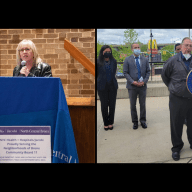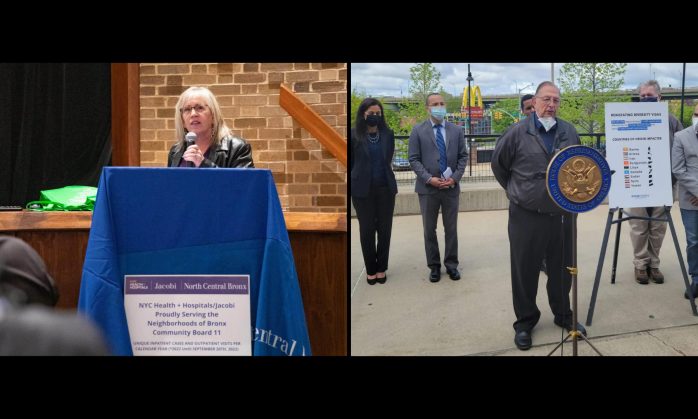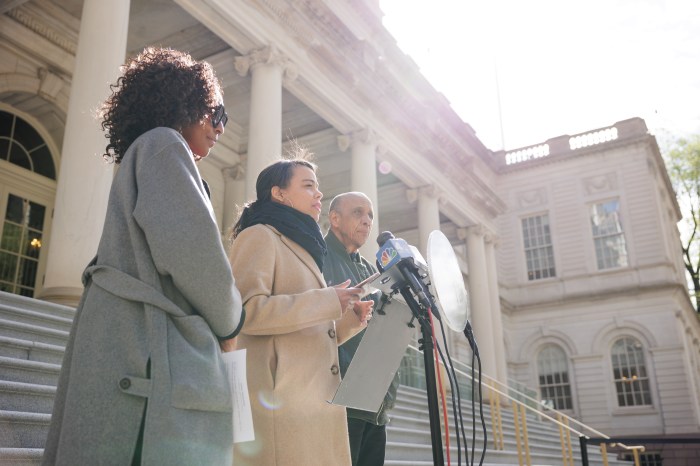The Willis Avenue Bridge replacement has completed its long journey down the Hudson River, but the bridge has a long way yet to go.
On Wednesday July 14, the components of the Willis Avenue Bridge replacement arrived at a holding dock in Bayone, NJ after being barged more than 100 miles down the river from the Port of Coeymans.
The bridge will stay in storage for about two weeks before crews will start assembling the structure, which will provide a major connection between the Bronx and Manhattan over the Harlem River.
“Coming all the way down river, this new bridge is a well-traveled investment in our city’s infrastructure and in the city’s economic future,” City Department of Transportation Commissioner Janette Sadik-Khan said. “The bridge will enhance mobility for some 70,000 motorists between the Bronx and Manhattan while making sure the Harlem River remains accessible to marine traffic.”
The bridge currently connecting the boroughs is a roughly 40-foot-wide “swing” bridge, which opens on a pivot to allow for nautical traffic on the Harlem River to pass through.
It will be replaced by a 350-foot-long, 2,400-ton steel structure with wider lanes and added amenities, such as a bike path.
Officials hope the new bridge, which will see about 25 million vehicles pass over it each year, will eliminate tight curves on the existing span and create more direct connections to the FDR Drive in Manhattan and the northbound Major Deegan Expressway.
The lanes on the new structure will also have wider shoulders than the roughly 10-foot shoulders on the existing span, and there will be wider pedestrian and bicycle pathways added along the north side of the bridge.
The new bridge was manufactured in Wisconsin and parts were assembled in Coeymans, a town about 14 miles south of Albany, before being barged to New Jersey.
Preparatory construction on the replacement began in March 2009 and installation of the $612 million bridge should begin Monday, August 2.
The existing span should be removed starting on Monday, September 20.
“This is one of the lifelines between the Bronx and Manhattan,” said Sam Schwartz, president of the NYC Centennial Bridge Commission, adding that it, along with the Third Avenue Bridge, is the only one-way bridge in the city.
“It was originally a two-way bridge, but in the 1950s they made it into a one-way bridge,” he said. “It was part of the project to make all the avenues one-way.”
The Willis Avenue Bridge was constructed in 1901, and cost only $2.4 million at the time. Since then there have been restoration projects, but over the years the wear and tear on the pivoting joints has taken its toll.
“We’ve gotten pretty good use out of this bridge,” Schwartz said. “It’s very significant to the movement of Manhattan and the Bronx; and frankly, it’s a lifeline from Westchester and even Connecticut too.”
Reach reporter Max Mitchell at (718) 742-3394 or mmitchell@cnglocal.com























